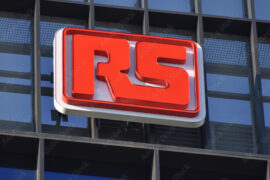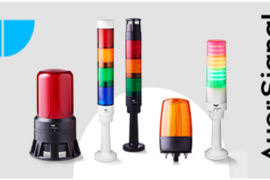The exceptional market conditions we are experiencing is leading to exceptional behaviour on the part of some semiconductor vendors, writes Steve Rawlins, CEO of Anglia Components. Customers are finding that orders that have been placed and are due for delivery are not being fulfilled, even though they have been waiting months for the parts. Why is this and how can customers protect themselves against this issue?
The brunt of the supply chain challenge in the industry is being borne by purchasing departments. It is they who must manage the consequences of lead times lengthening and prices increasing after orders have been placed. They have to try somehow to find parts to fulfil production requirements when shipments get cancelled or put back shortly before they are due. However, design engineers can play their part too.
Design for supply
We have been talking to our customers about ‘design for supply.’ If this feels like one issue too many to consider alongside design for manufacturing, design for recycling and just straightforward design to create a product that fulfils the brief within the SWAP and cost envelope, you have my sympathy.
However, a little thought can make the difference between a product that can be built and shipped and one that cannot – sometimes because just one or two parts on the BoM cannot be sourced. There is a powerful case right now for reviewing the design of products with this issue in mind.
Several discrete parts can sometimes be consolidated into one integrated device, giving purchasing fewer part numbers to procure. Is there a way of integrating that ‘patch’ that was applied to rectify an issue into the main design?
We are also recommending that customers consolidate their design to as few manufacturers as possible. Whilst it makes no sense to cancel orders already placed, it is well worth reviewing designs using many different vendors to see whether there is the opportunity to consolidate.
Equally, for new products going into production it is worth considering how many vendors to source from. Some vendors are favouring customers who source many parts from them – seeing them as somehow more valuable or loyal. Sometimes there is no alternative. There is only one supplier for a particular device, and that supplier offers nothing else that can be applied to the design. But where there are several sources, and the differences in terms of price and/or performance are marginal and not critical to the design, it is better to consolidate in the current environment.
Of course, reviewing old designs in this way can bring many other benefits. Often it is possible to reduce size, cost and power consumption and improve functionality and performance. The devices specified may no longer be the most competitive solutions on the market – often there will be better, lower power, smaller or faster parts available that can enhance performance and/or reduce size.
The design review can consider current lead times too – eliminating parts that are currently on a long lead time in favour of those with better availability. This is sometimes called ‘design for availability.’ Truthfully it is more of a short term fix, as the supply situation on individual devices changes so frequently at the moment.
The current market
The measures I’ve outlined won’t magically make the supply chain issues I’ve mentioned disappear – but they can make a real difference. Lead times in the market are getting longer rather than shorter and can be a year or more. There is no doubt that, sooner or later, we will return to a more normal market.
In the meantime, we believe in doing the best job we can to support our customers through this and other challenges and helping them get products out of the door as quickly and efficiently as possible.











Comments are closed.